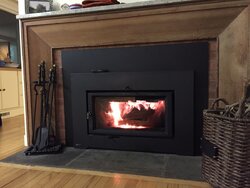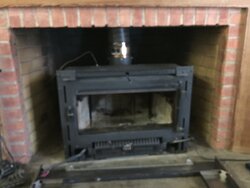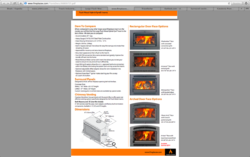So I had the insert out the other day to see how easy it would be to put in a block-off plate. Took a couple pics. Check out the insert with the surround off, compared to the pic of it burning tonight (first burn this year).


Now the surround gets pretty hot to the touch, too hot to keep your hand on for more than a two-count. Here's my question:
Is the surround costing us heat, by keeping hotter air trapped behind it? Is that something the block plate will totally fix, or would I get some more heat out of the insert by putting some holes in the surround in a few places with a 1" spade bit? Is that insane/dangerous?
It just seems like even if a block-off plate was in, there would still be a lot of hot air that's not moving out into the room. Why isn't the surround more of a grate than a solid piece?
Thanks!


Now the surround gets pretty hot to the touch, too hot to keep your hand on for more than a two-count. Here's my question:
Is the surround costing us heat, by keeping hotter air trapped behind it? Is that something the block plate will totally fix, or would I get some more heat out of the insert by putting some holes in the surround in a few places with a 1" spade bit? Is that insane/dangerous?
It just seems like even if a block-off plate was in, there would still be a lot of hot air that's not moving out into the room. Why isn't the surround more of a grate than a solid piece?
Thanks!



 )
)